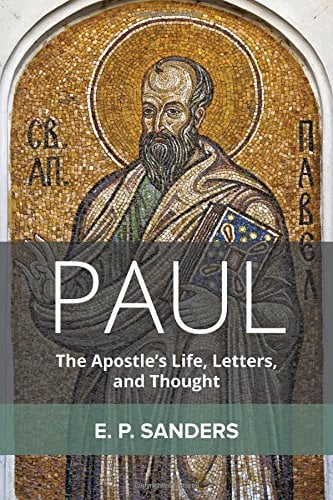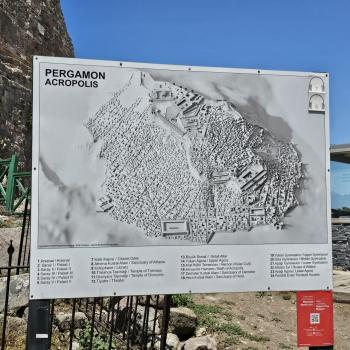pp. 158-59 Bewildering is his suggestion that Paul visited south Galatia with Barnabas in the late 30s, but did not found a congregation there, but rather in north Galatia.
pp. 160-61—he offers a range of dates and says we can’t be precise. And he says what matters more is the order of the letters, rather than the dates, with 1 Thess. first up to bat.
pp. 163-65— Sanders reminds that he is reading Paul as a historian and for historical purposes, and while he is fine with other sorts of readings, he is not trying to do a theological reading etc. of Paul. Sanders says this requires getting behind the text, following small clues in the text. [The problem with this whole approach is that it amounts to taking bits and pieces from the text and constructing a different whole, and a different perspective on the whole. Historians sometimes need to do this, but it is fraught with difficulties and can lead to a skewing of what Paul actually said and did. In particular, both Jerry Sumney and John Barclay have rightly warned us of the considerable dangers in mirror reading Paul’s text to try and reconstruct, for example, who his opponents were. Sumney even sets up detailed criteria for evaluating such things.]
p. 166–Sanders urges that it is right to ask what the text presupposes, since we enter the conversation in the middle of things. He suggests the approach of listing the topics of the letter, and even memorizing the topics. Paul was not a johnny one note, with the one note being justification, which as Sanders says, doesn’t even come up in some of the letters.
pp. 167-68—he explains the problem with relying on translations. And he notes the oddity that only Christians seem to have given official status to one or another translation, even though they know that translations are not perfect and that the Bible was originally written in Hebrew, Aramaic, and Greek.
p. 169 “Paul’s letters were not essays on selected themes that were revised and polished at leisure, nor did the editor who collected the letters rewrite them to take out the rough patches.” His proof for this are the anacolutha such as we find in Gal. 2.4-5.
pp. 169-70 “My picture of Paul as he dictated…is this: he paced, hands behind his back, forehead forward and dictated in bursts—not in the measured tones that reflect that the letter was previously composed in his mind. The mention of one word will call to mind another word, and this may lead to a digression. He is sometimes heated as he dictates—angry at an opponent, reacting vigorously against what he regards as personal slurs. In this mood, he sometimes curses and threatens. But he is never unmindful of the wisdom of conciliation, and he treats the recipients with respect— sometimes with strong praise.”
p. 170— He pictures Paul in each city having a small room, perhaps littered with scraps of leather, but not scrolls, he probably didn’t carry around a pile of scrolls, but rather worked from his memory of the Bible. He worked with his hands, told visitors about Christ, occasionally dictated to a scribe. He was always in a hurry, to convert as many as possible before the Lord returned. He was under daily pressure and constant anxiety once he had established churches to worry about (2 Cor. 11.28).
p. 171— Sanders plans to pay attention to two threads— the relationship of justification to being one person with Christ, and secondly to change and development. His response to unforeseen issues are the most interesting parts of the letters.
p. 172— Sanders sees a development in Paul’s thought in eschatology, but also in his thought about the inner spiritual life and the way in which Christians begin to be transformed. We see the development in the discussion about suffering, receiving the Spirit, and being one person in Christ. “Development doesn’t mean ‘retraction’. On the contrary, I find no instance in which Paul retracts what he earlier thought, but rather a good deal of movement towards a richer fuller description of the meaning of life in Christ.”












